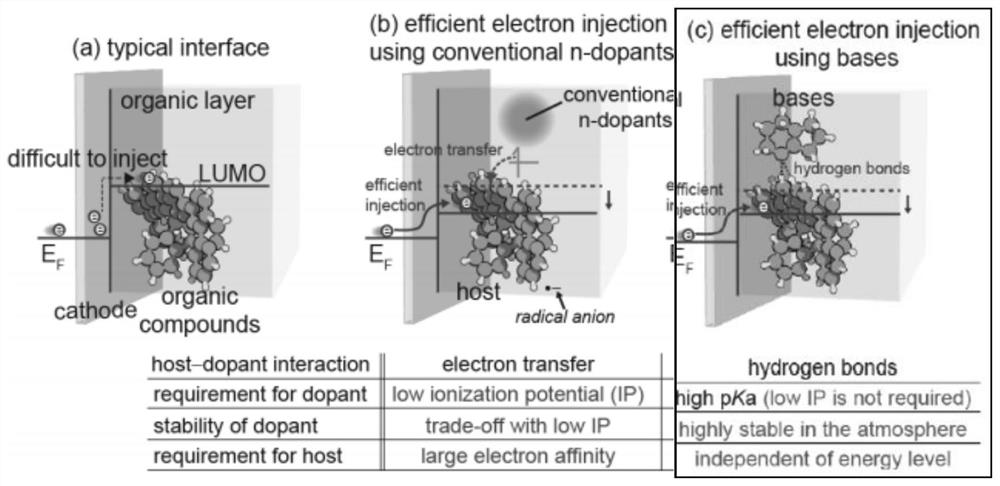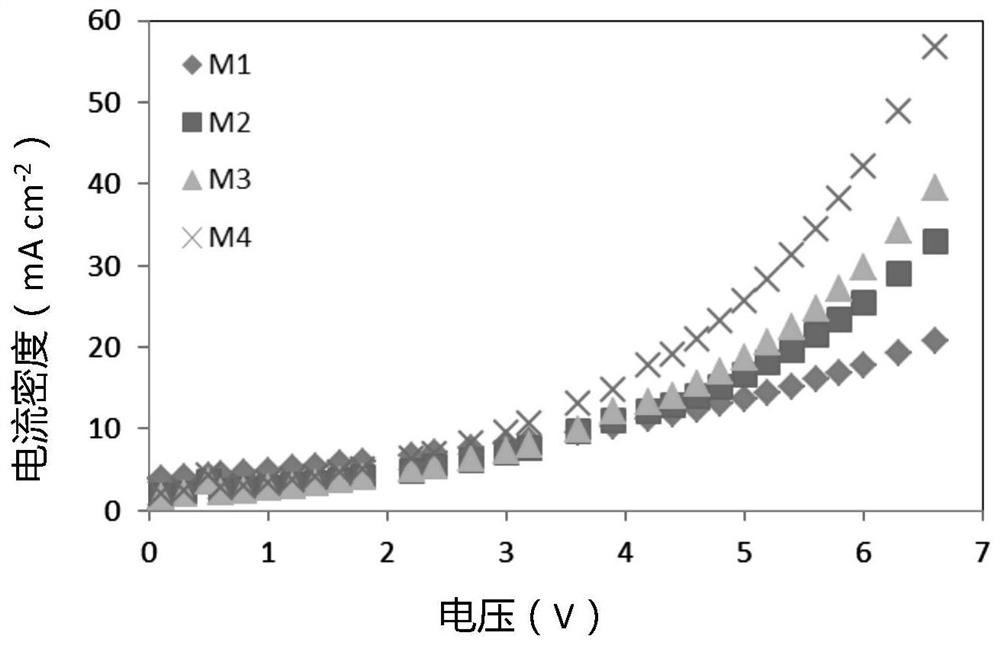An electron injection material and an organic light-emitting device
An electron injection material, an unsubstituted technology, applied in the field of electron injection materials and organic light-emitting devices, can solve the problems of inferior injection properties as alkali metals, bottlenecks in transfer efficiency, life of cracking devices, etc., and achieve molecular stability, high electron injection capability, Combining simple effects
- Summary
- Abstract
- Description
- Claims
- Application Information
AI Technical Summary
Problems solved by technology
Method used
Image
Examples
preparation example Construction
[0090] The present invention also provides a preparation method of the above-mentioned electron injection material, comprising: reacting the compound represented by formula (II) with the compound represented by formula (III) to obtain R 1 with R 2 Compounds represented by formula (I) having the same substituent;
[0091] Alternatively, the compound shown in formula (II) is first reacted with the compound shown in formula (III), and then reacted with the compound shown in formula (IV), to obtain R 1 with R 2 Compounds shown in formula (I) with different substituents;
[0092] Alternatively, the compound shown in formula (II) is first reacted with the compound shown in formula (IV), and then reacted with the compound shown in formula (III) to obtain R1 with R 2 Compounds represented by formula (I) having different substituents.
[0093]
[0094] Wherein, X is a halogen, preferably Br; the R 1 with R 2 All are the same as above, and will not be repeated here.
[0095] T...
Embodiment 1
[0109] The preparation method of the electron injection material M1 comprises the following steps:
[0110] (1)
[0111] Add 100 g (714.28 mmol) of compound 1 into a 3 L three-necked flask, add 1 L ether solution, and stir. Then measure 76.46mL (1499.98mmol) of bromine into the constant pressure dropping funnel, seal the liquid surface of bromine with 10mL of water, slowly add it dropwise into the reaction solution, and stir at room temperature for 6h after the dropwise addition is completed. After the reaction was over, 500 mL of saturated NaCl was added to the reaction solution to quench the reaction, then the organic phase was extracted with dichloromethane (1 L), and the organic phase was then washed with saturated NaHSO 3 Extract twice, and finally extract once with saturated saline. Collect the organic phase and add anhydrous magnesium sulfate to stir, filter, collect the filtrate to remove the solvent by rotary evaporation, and purify the product by column chromatog...
Embodiment 2
[0121] The preparation method of electron injection material M11 comprises the following steps:
[0122]
[0123] Add 20 g (67.13 mmol) of compound A and 33.11 g (140.9 mmol) of compound 2 into a three-necked flask in turn, add 200 mL of toluene solution, and stir well. Nitrogen replacement was performed three times, and 0.15 g (6.713 mmol) of palladium acetate and 19.44 g (140.9 mmol) of potassium carbonate were added under a nitrogen atmosphere. After the addition, nitrogen replacement was performed three times, and stirred at 120° C. for 6 h. Cool to room temperature at the end of the reaction, and use 200mL saturated NaHSO 3 The reaction was quenched, and the organic phase was extracted with dichloromethane (150 mL), and the organic phase was then washed with saturated NaHSO 3 Extract twice, and finally extract once again with saturated saline, collect the organic phase and add anhydrous magnesium sulfate to stir, filter, collect the filtrate and rotary evaporate to re...
PUM
 Login to View More
Login to View More Abstract
Description
Claims
Application Information
 Login to View More
Login to View More - R&D
- Intellectual Property
- Life Sciences
- Materials
- Tech Scout
- Unparalleled Data Quality
- Higher Quality Content
- 60% Fewer Hallucinations
Browse by: Latest US Patents, China's latest patents, Technical Efficacy Thesaurus, Application Domain, Technology Topic, Popular Technical Reports.
© 2025 PatSnap. All rights reserved.Legal|Privacy policy|Modern Slavery Act Transparency Statement|Sitemap|About US| Contact US: help@patsnap.com



